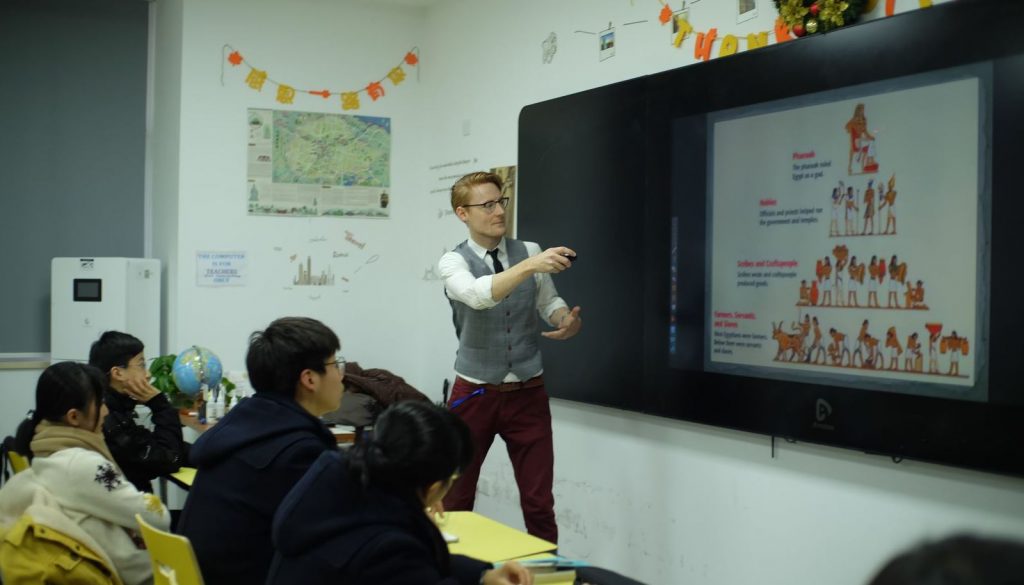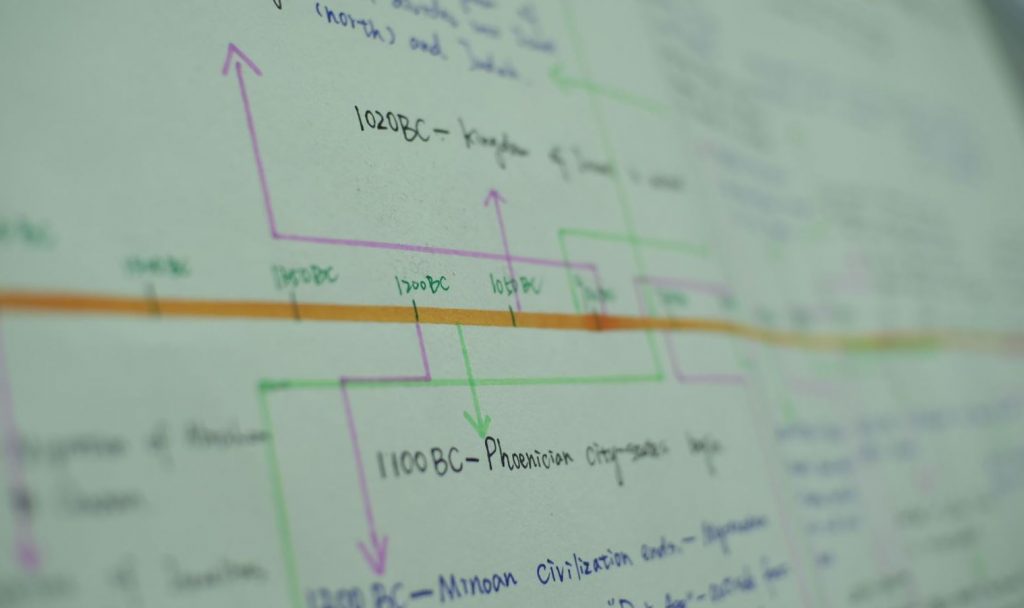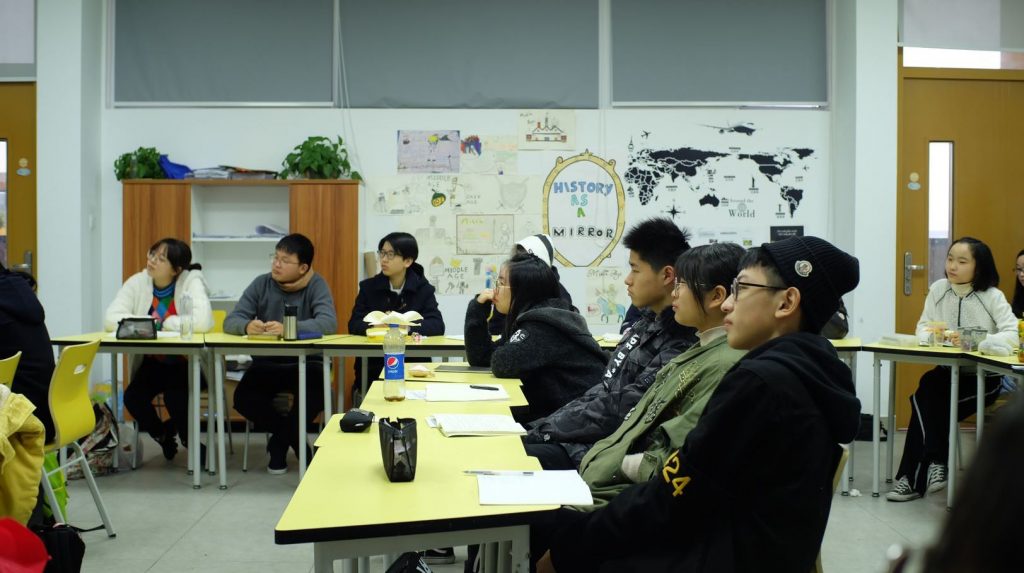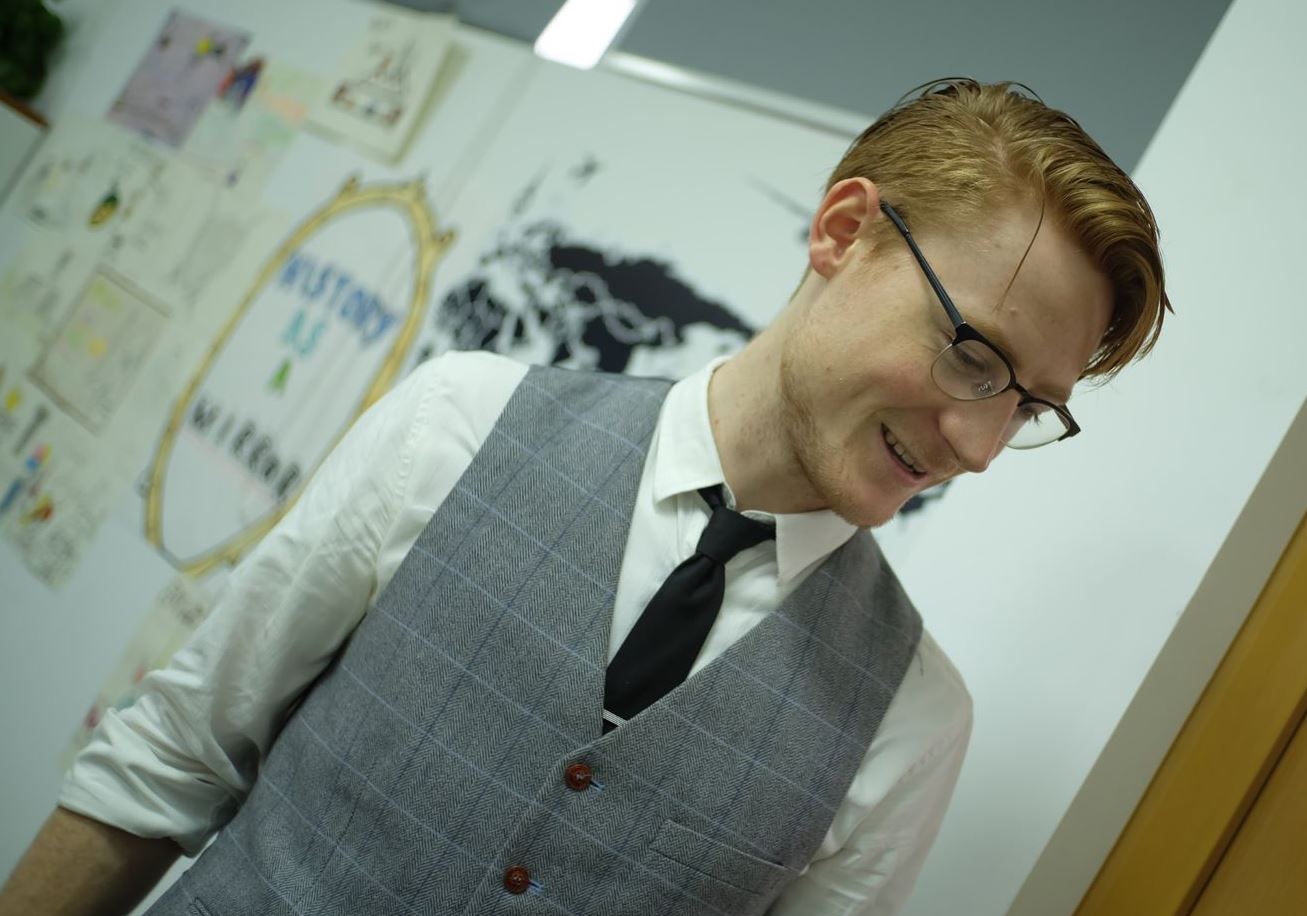Analyzing History From Multiple Perspectives
Bringing his own style of teaching history to students on our Barstow Ningbo campus, Laurence Foster does far more than give his class historical facts. He guides them towards using their critical thinking skills, taking a multi-angled view of historical events, and deeply analyzing history both horizontally and vertically.
By placing historical facts into the environment of the time, and researching and exploring facts chronologically, students gain new perspectives and opinions, and draw creative conclusions. In today’s class, Mr. Foster has compiled main events and figures into “cases”, and empowered students to embody their very best Sherlock Holmes, taking each event and combining it with the background, time, political environment, and cultural characteristics to solve these “cases”.

Mr. Foster with his students
According to Mr. Foster, students need to take a historian’s perspective when analyzing historical events, come up with some ideas of their own, find further evidence, and finally reach their own conclusions. The end product would be an essay.

Students in Mr. Foster’s history class construct timelines to analyze history
Students embarked on a brainstorming session, analyzing the facts, reading the essays, and sharing their ideas. As a rule, Mr. Foster does not correct the students in any way as long as their thinking remains in line with the historical and cultural background of the time. While the students had much discussion and reflection, it was clear that they would need more research and exploration after class in order to complete their essays. “ I never knew I could become a detective in ancient times,” said one student. “History is very fun to learn this way.” After all, letting students travel through time and space, change their roles, and immerse themselves in a historical period, can only peak students interest in history as a subject.

“Today we are investigating the mysterious death of Tutankhamun – just one part of our study on ancient Egyptian society. I designed the class to give students an idea of how historians used their resources to build their understanding of historical events. In fact, except for Tutankhamun’s youth, we know little of what happened at that time. Students had to use background information, such as body x-rays of Tutankhamun, to explore three theories that might have caused his death. In the end, students will write a report of each theory based on what they have learned, and clarify and explain the most logical one in their mind. This gives my students not only an opportunity to develop their historical analysis skills, but to experience the fact that history is not a static narrative. It needs to be continually adjusted and modified based on new evidence and discussions.” – Laurence Foster
Learn more about our global school campuses – holistic environments where students have the opportunity to become true global learners.
Want to join our inspiring community of educators teaching on our global campuses? Check out our KL career opportunities today!




关于我们
了解更多
总部地址
101 Federal Street, Suite 1900,
Boston, MA 02110
1-781-996-0425
info@kleducation.org
订阅我们